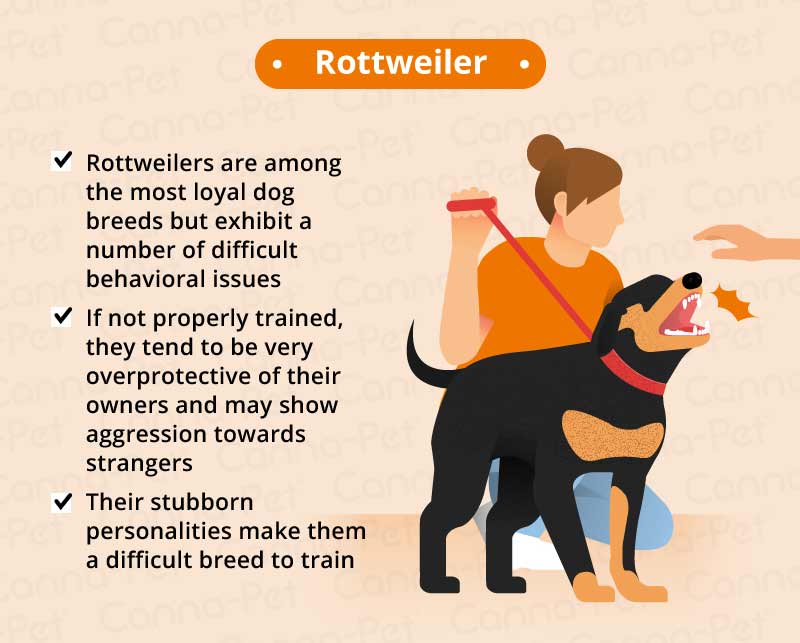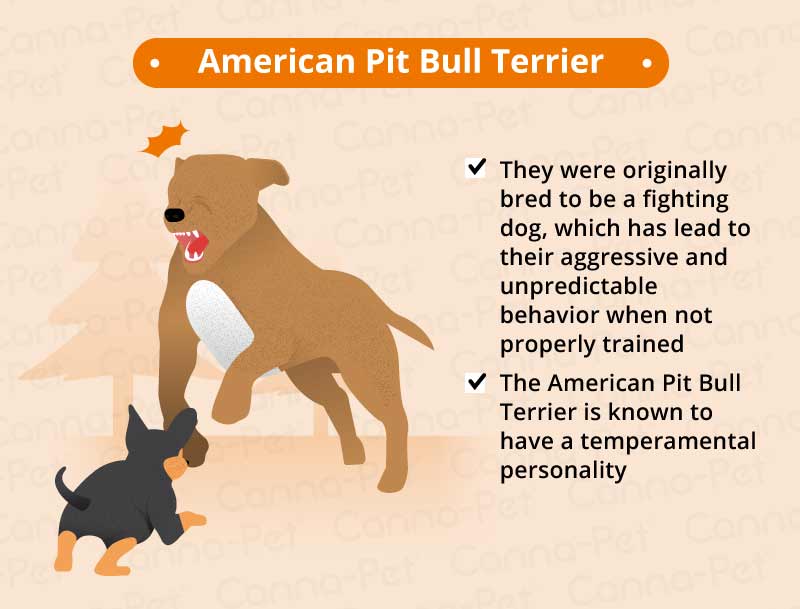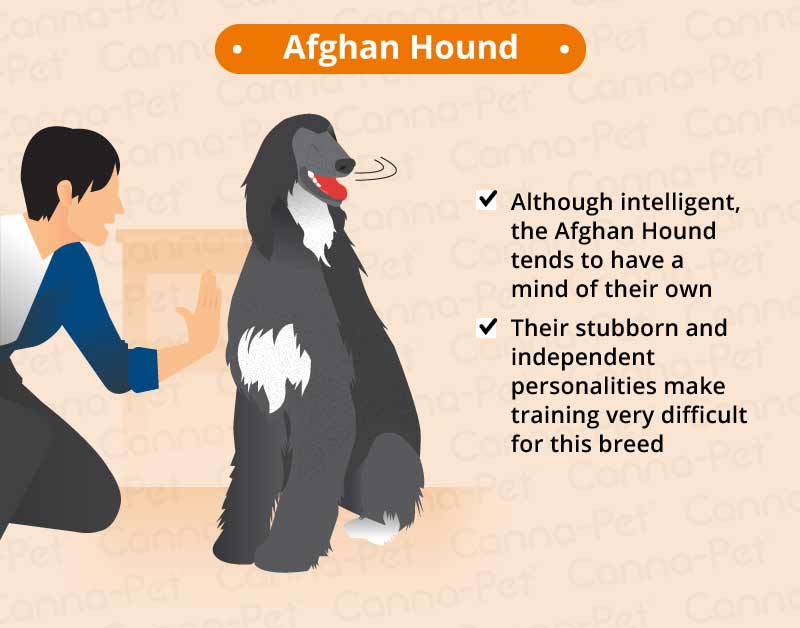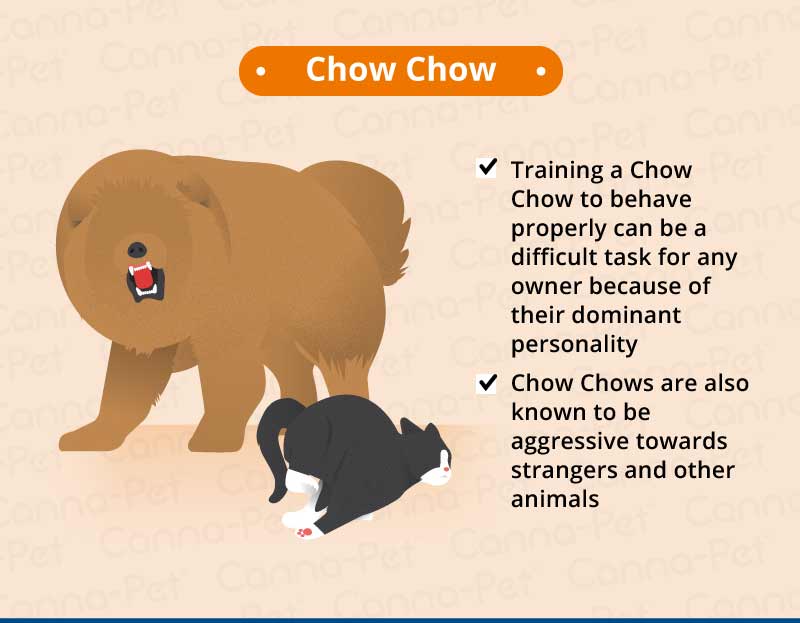When you and your family feel the time is right to get a dog, it can be hard to know where to start. With so many breeds to choose from, how do you decide? Do you pick a rescue or get one from a breeder?
And those people getting a dog for the first time may be curious as to which dogs are the harder breeds to train. While there’s always more at play than just breed alone, there are some breeds that are thought of as more difficult to raise and train than others.
So for those first-time dog owners looking to take the easy road and wanting to avoid difficult and stubborn pups, and just as much, if not more, for more ambitious dog owners who feel ready to take on more of a project (tough dogs need love too!), below is a list of the top 10 hardest dog breeds to train!
Before diving in, it is important to understand that no matter how difficult a breed may seem, a dedicated owner can still end up with a great pet. If you know what you’re getting yourself into, the rewards may seem greater than those with the “easy-to-train” dog breeds.
And of course, no matter the breed, it really comes down to the owner. Set reasonable expectations and learn how to properly train your dog and you should end up with a great pet no matter what.
Rottweiler
The first impression you get with a Rottweiler is their sheer size. Although quite beautiful dogs, they are rather intimidating in appearance. They sometimes have a bad reputation, but are actually among the most loyal dogs to their owners. In fact, they would probably lay down in traffic for their owner.
Unfortunately, therein lies the problem. If not properly trained, Rotties become too protective of their owners and will often lash out at strangers for no apparent reason if they feel their owner is threatened. While often playful, they can be stubborn and growl to disagree when going through training.
Also, they will often listen to no one but their owner. If you’re considering a Rottweiler, get professional help to learn how to properly train them.
American Pit Bull Terrier
The public opinion of Pit Bulls is that of a fighting dog, and unfortunately, they have often been bred for that reason for generations. And while they are among the most aggressively defended breeds in the rescue world, they do tend to be more difficult to train. Although they can be among the most loving, loyal, and friendly dogs, they can be quite temperamental.
They also often don’t know how powerful they are, and it can be difficult to teach them to play gently and learn their own strength. When properly trained, a Pit Bull is nothing more than an athletic teddy bear, but it takes plenty of dedication and patience to get there.
Siberian Husky
Huskies are among the most beautiful dogs out there, but that doesn’t mean they are without their difficulties. They are an extremely active breed, especially as puppies, which requires dedicated training. Siberian Huskies are also working dogs, historically used to pull sleds, which means they need a job to be satisfied.
They will act out if they are bored, which can make them difficult to keep for the average owner. Pairing the husky with another dog can often be helpful, but may also compound the issues.
Bullmastiff
Bullmastiffs are massive dogs that can overpower a full grown human without much effort. Generally, however, they are people pleasers, and quite docile. The issue with Bullmastiffs is that they often don’t get along with other dogs.
Training is difficult for this breed because if they are stubborn, there is little you can do due to their large size. They often have trouble understanding their role as the dog with a human. And the drool? Well, that’s another issue altogether.
Chinese Shar-Pei
By appearance, you’d think there is no way these cuddly looking dogs could be difficult, but they have a hard time socializing and are not thought of as a very friendly breed. Shar-Peis are often highly territorial. Owners will often have to restrain this breed from attacking strangers, visitors, or other animals.
Afghan Hound
A very intelligent breed, the Afghan Hound is often compared to a cat personality-wise. This is because they tend to do whatever they want, whenever they want, often ignoring your prompts and commands. This breed may very well seem to take to training, but later on decide he no longer wants to listen. This can be very frustrating for an owner and something to know going into picking this breed.
Basset Hound
Basset Hounds are actually known for being difficult to housebreak. This process may take longer than usual, which can be very frustrating for you and your household. And as a hound, a Basset will follow his nose, no matter what you might be commanding him to do. It needs to find the source of the scent no matter what. Positive reinforcement works best with a Basset Hound, but these are difficult behaviors to break regardless of your treatment.
Beagle
Beagles are undeniably super cute dogs, but can be quite difficult to train. They are a high energy breed of dog, and that very nature often prevents them from listening and learning your commands. They love to bark as well, which can be annoying for you and your neighbors. They also tend to develop weight issues if not given enough exercise.

Bulldog
A breed of dog soaring in popularity in recent years, the Bulldog is a lovable, but stubborn breed. You might think a Bulldog is easy, because all they seem to do is eat and sleep, but they often don’t care to listen as well. They can be trained, but it might take a bit more work than other breeds, even though they don’t require much activity.
Chow Chow
Training a Chow Chow to behave properly can be a difficult task for any owner. They are a dominant breed and can often be stubborn as well. A Chow Chow’s temperament can also lean toward the aggressive side, especially with strangers or other animals. They are also known to get jealous easily, and crave a lot of attention.
Tips for Training a Stubborn Dog
Training a dog is a frustrating process, often greatly, but it’s important to know that you aren’t on your own and there is help for you if and when you need it.
Owners that don’t seek or refuse to seek help are the ones who often end up giving up their dogs. This is why it is so important not to give up. Even the most challenging dogs can be turned into good pets. It just might take seeking help or a change in your training style and routine.
It’s also important to remember that dogs who don’t listen also aren’t necessarily bad dogs. Dog behavior is just different than human behavior. And your expectations for how you think your dog should act may not immediately come to fruition. Changing your dog’s behavior as well as your expectations will take time and effort.
And when things are going poorly, you don’t necessarily have to abandon every training strategy you’ve been using. Sometimes a small tweak can make a huge difference. This is where the help of a professional can be especially handy.
Below are a few things you can do to help with training your stubborn dog.
Take Your Time
Baby steps are key. Your expectations as a dog owner will often determine how well the training will go. When it comes to difficult dogs, make sure you stick with the things that seem to work, and begin to reward even small improvements or successes. Really drill into your dog that training is good, and only change your training routine one item at a time. If your training is too hard, your dog will give up, and so will you, so take it slow!
Remove Distractions
Do what you can to help your dog focus when you are training. You don’t want to start training out in the dog park surrounded by other dogs. Rather, try a quiet area in your home. Put away toys or anything else that may distract your dog. If you do go outside, keep your dog on a leash or in a fenced-in area.
Consistency is Key
This goes along with not changing too much of your dog’s routine. Keeping a consistent training regimen is what really drills in what you’re trying to teach to your dog. If you are constantly switching up your training techniques and cues, you will only confuse the animal. If you have other family members, make sure everyone is training the dog in the exact same way. Confusion will only lead to stubbornness!
Don’t Punish Your Dog
We understand that a dog who doesn’t listen to your training can be frustrating, but punishing your dog will only make things worse. Punishment can increase anxiety and lead to a higher risk of aggression, as well as make your dog lose trust in you. You should instead go with training that is reward based, and focus on positive reinforcement. Rather than punish your dog when he does something wrong, redirect him to a good behavior and then reward him for that.
Give Your Dog Rewards He Actually Wants
Make sure your dog actually enjoys the rewards you are giving him. This means tasty treats that your dog craves and the attention he desires. You shouldn’t feel like you are rewarding your dog too much during training, positive reinforcement is the way to go! Just choose healthy and small portions if you are constantly feeding him treats.
Make Training Part of Your Dog’s Routine
You shouldn’t think of training as something you do every now and again. It should become a part of you and your dog’s daily routine. Engage your dog in training sessions as much as you can throughout a day. Give your dog frequent attention, and training should go more smoothly.
Seek Professional Help
The best way to ensure you’re giving your dog the best possible training program is to seek the help of an expert. This is especially true if your dog is displaying aggressive behavior or showing excessive signs of fear. A canine behavior professional will be able to help you come up with a training program suited to your particular breed of dog.


Sources:
- “20 Hardest Dog Breeds to Train.” Top Dog Tips, 2 Jan. 2018, Accessed 3 June 2017. www.topdogtips.com/hardest-dog-breeds-to-train/.
- “Hardest Dogs to Train.” Petsworld, Accessed 3 June 2017. www.petsworld.in/blog/hardest-dogs-to-train.html.
- Seymour, Kristen. “Survey: 15 Dog Breeds New Pet Owners Should Avoid.” Vetstreet, Accessed 3 June 2017. www.vetstreet.com/our-pet-experts/not-for-newbies-veterinary-experts-choose-15-worst-breeds-for-new-pet-owners.
- Hartley, Jodi L. “What Are the Hardest Dogs to Housebreak?” Daily Puppy, 21 Nov. 2017, Accessed 3 June 2017. www.dogcare.dailypuppy.com/hardest-dogs-housebreak-2184.html.
- “9 Best (And Worst) Dogs For First-Time Owners!” K9 Of Mine, 8 June 2018, Accessed 3 June 2017. www.k9ofmine.com/best-worst-dogs-first-time-owners/.














